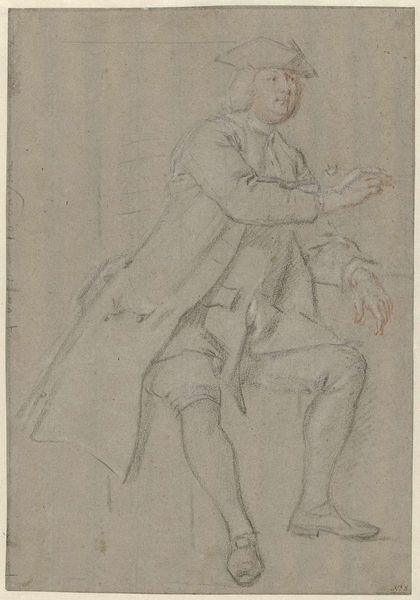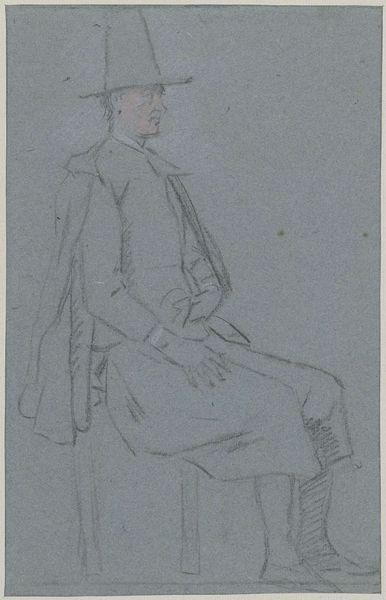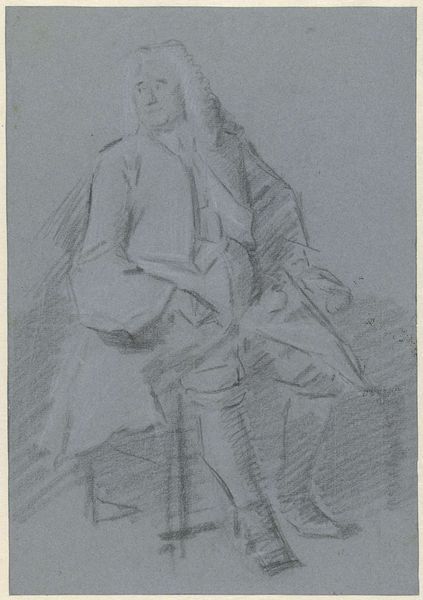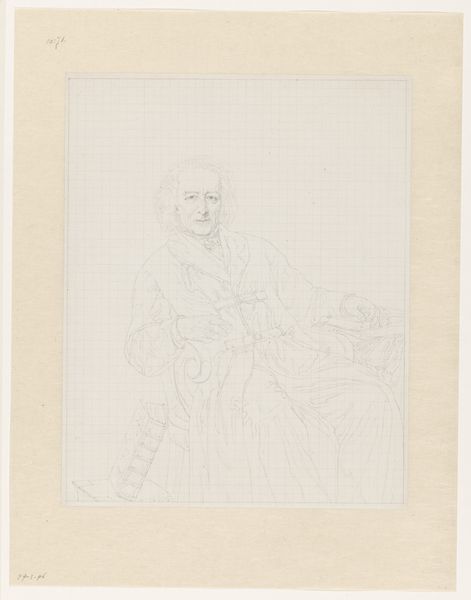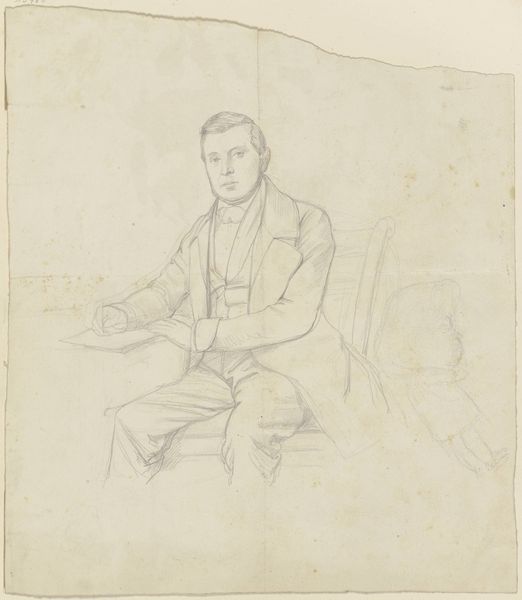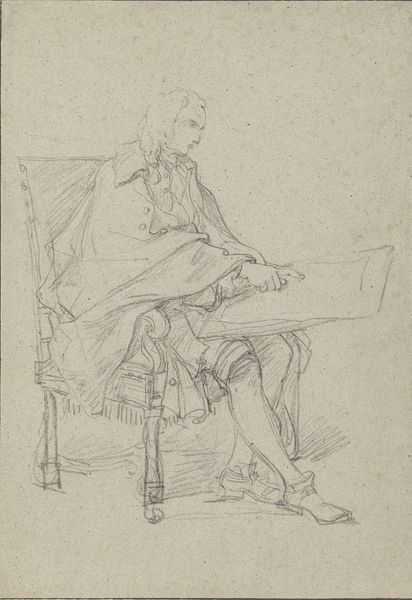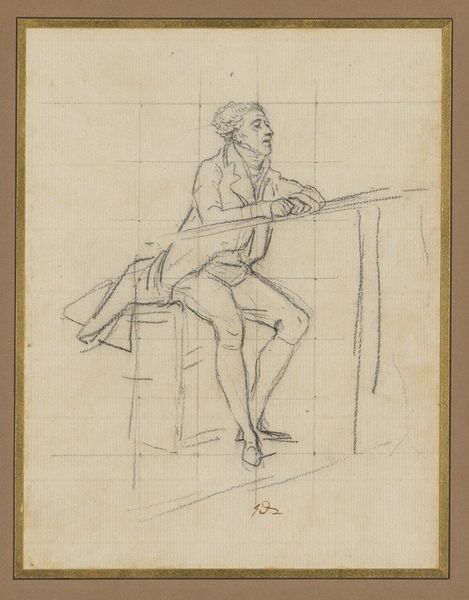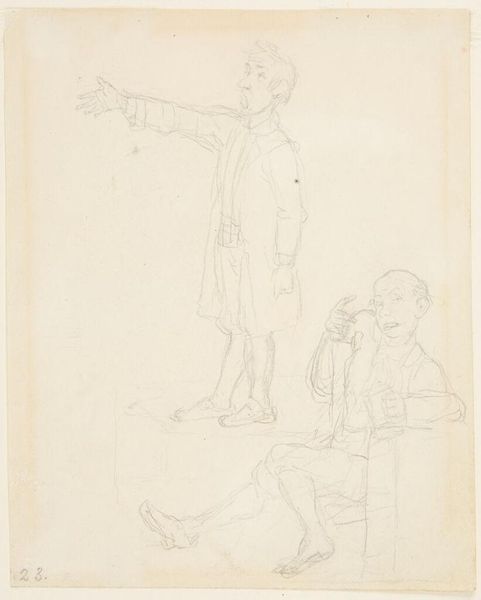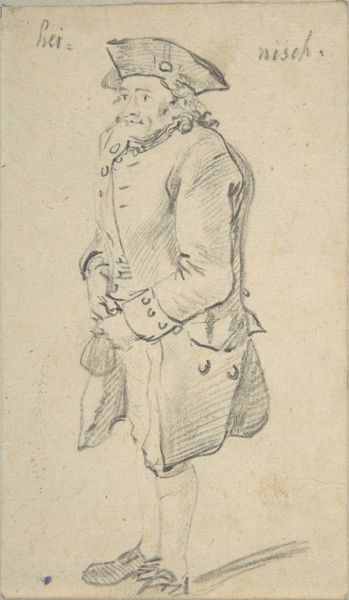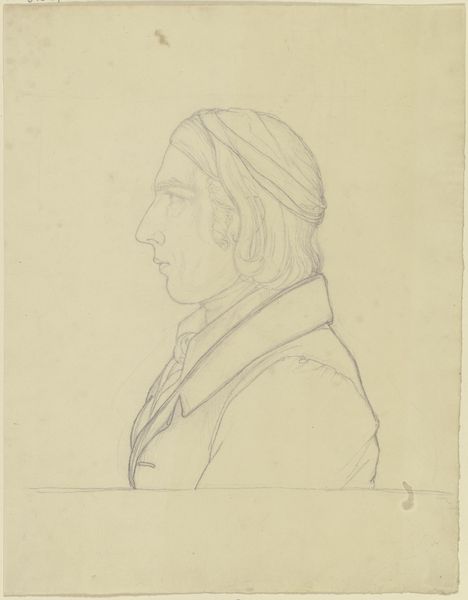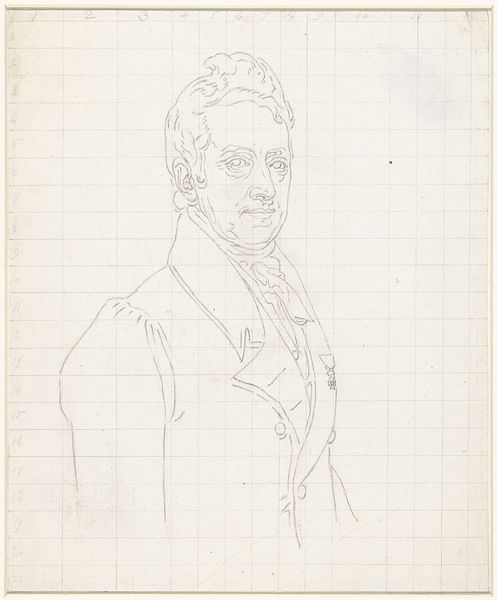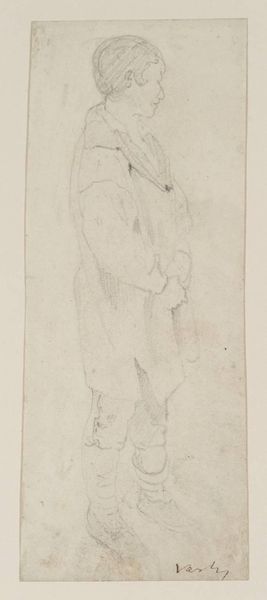
drawing, paper, pencil
#
portrait
#
drawing
#
etching
#
paper
#
pencil
#
realism
Dimensions: height 374 mm, width 289 mm
Copyright: Rijks Museum: Open Domain
Henricus Wilhelmus Couwenberg created this portrait using graphite on paper, sometime in the first half of the 19th century. The tight, almost architectural lines meticulously render the sitter and his surroundings. The labor-intensive process behind this drawing reflects the artist's commitment to capturing precise likenesses. The use of graphite allows for subtle gradations in tone and texture, as well as a high level of detail. Look closely at the lines that render the subject’s garments and facial features. Also notable is the grid drawn on the portrait. This suggests that the portrait was part of a system of mechanical reproduction, an early mode of image transfer that was popular at this time. This allows the portrait to be accurately scaled up or down, or transferred onto another medium. The method is also a commentary on the rise of industrialization and its impact on artistic production. Understanding the materials, processes, and context enriches our appreciation, challenging the separation of fine art and craft.
Comments
No comments
Be the first to comment and join the conversation on the ultimate creative platform.
